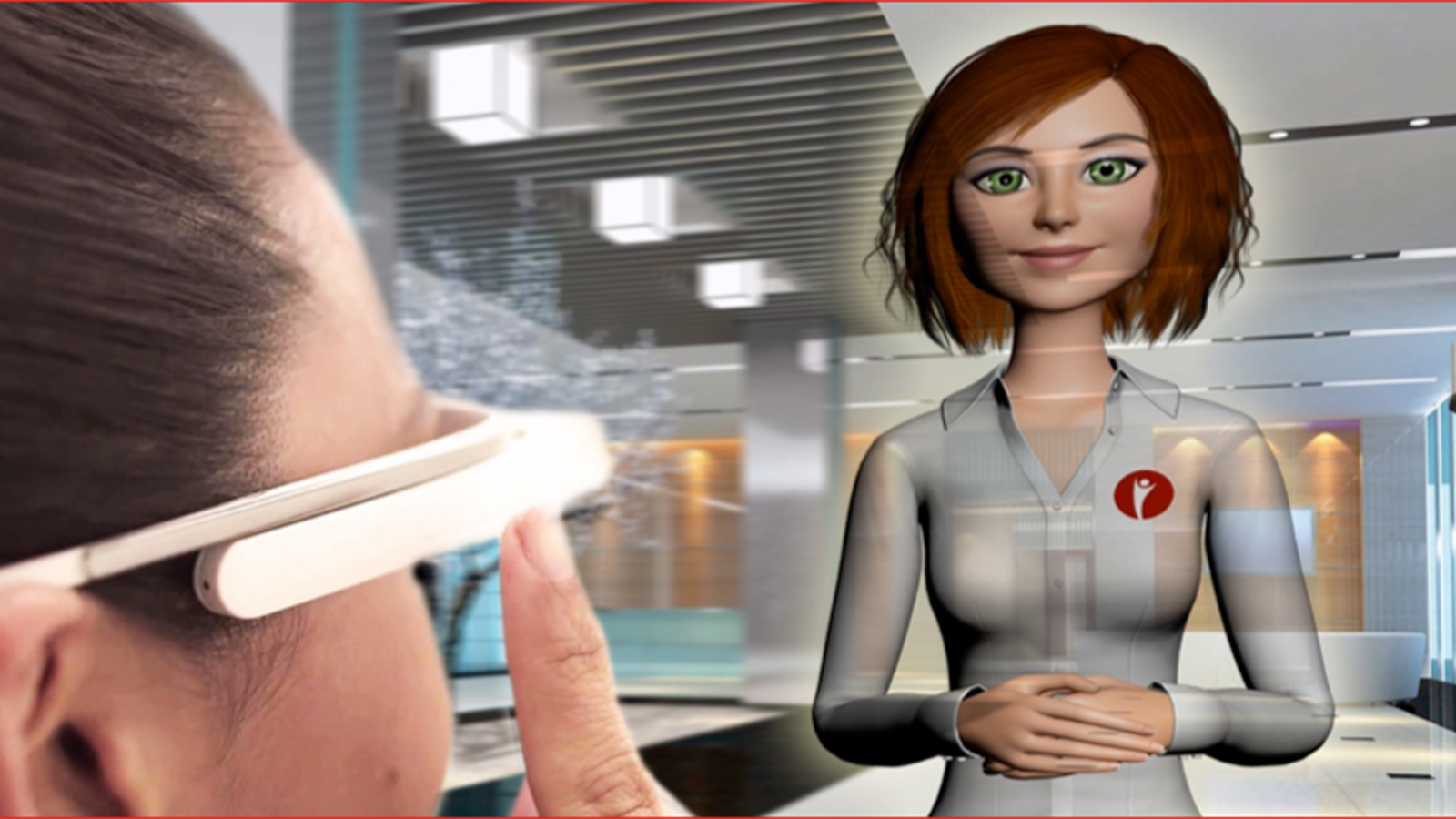Originally posted on Hypepotamus by Holly Beilin
Siri, Cortana, Alexa… having a virtual assistant in all your devices and gadgets certainly isn’t a rarity anymore. But how often can you say you interact with a human-like, intelligent, personable hologram?
For Chuck Rinker, the answer is fairly often. The founder and chief innovation officer of PRSONAS™, a virtual digital personality startup, provides the startup’s clients with holograms in different characters and personalities that can do everything from work a trade show floor to greet guests at a party.
Rinker describes himself as a guy that “likes left and right brain ventures.” His education in computer science and electrical engineering, along with multimedia and 3D animation studies, reflects that duality.
“My whole career has kind of been centered around bringing the technical side and creative together,” he says.
Raleigh, NC-based PRSONAS™ spun out of Rinker’s interactive experiences firm, nuMedia Innovations. nuMedia focuses on creating tech-driven experiences for clients such as AR/VR displays, 3D viewing and projected touch screens. When clients asked for a simulation for trade show booths that would closely resemble a human-like personality, the team got to work.
“We used this holographic display technology and wrapped it around what we call a ‘personality engine.’” The product was such a hit that the team decided to spin it out into a separate company, and in 2013, PRSONAS™ was born.
Initially staffed by Rinker, CEO David Rose and just one other, the team still splits resources with nuMedia. But their product has evolved — the digital personalities can now be deployed across any channel, including AR, VR, holographic projections, mobile or web.

Many of their clients still use the humanoid characters for trade shows or events. For example, the unit can be projected on the trade show floor to greet and welcome customers.
“Some people are reluctant to be engaged by human sales reps. They always felt like they’re being pitched to and sold to,” says Rinker.
Similarly, the startup has employed units in the retail space. In a Microsoft store, they deployed a holographic personality that could walk up to customers, ask them what they were looking for, provide product recommendations, and direct them to a human salesperson for further assistance.
Rinker is also proud of some of their more fantastical creations. For example, the team created a four foot-tall bear to greet patients at a charity event for a pediatric hospital. For an Alice In Wonderland-themed event, they designed a Cheshire Cat.
“The point is that it’s anything that relays a notion and personality,” explains Rinker. He notes that the technology doesn’t replace jobs, as many accuse AI-driven tools of doing, but rather augments the role of humans by providing backup support.
“Our units don’t have the ability to react as intelligently as a human does. But what it does act as is a screening, as a pre-qualifier,” Rinker says. In another use case, a PRSONAS™ has been deployed as a virtual receptionist to alert hair salon stylists that their clients have arrived, or direct those who walk in without an appointment to an open stylist.
Rinker also says that their technology provides such a different service than a virtual assistant like an Amazon Echo or Apple’s Siri, that he doesn’t even consider them competitors, and same with specific retailers’ apps.
“What they lack is that personal connection that you get when you’re at a location. Not everybody’s going to walk into a Wal-Mart and download the Wal-Mart app or go to Home Depot and download the Home Depot app,” he says.
“Our technology is bridging between speech recognition, artificial intelligence, portable display devices, location based display devices and bringing them together. I want people to focus on that personal communication.” Rinker points out that another ability of the PRSONAS™ unit that none of these other technologies can employ is the use of sign language for hearing-disabled customers. The company has actually hired sign language interpreters to teach the language to their units.
To hire and develop all of this new technology, the PRSONAS™ team has raised funding to the tune of $1.2 million. Their most notable investor is Steve Case of Revolution’s Rise of the Rest, who invested in the company in 2017 after they competed at a Google Demo Day in Silicon Valley.
Other investors including Pilot Mountain Ventures, Fox Ventures and the Charlotte Angel Fund.
PRSONAS™ is continuing to develop their technology further, expanding into new industries and finding new use cases. Rinker says they’d also like to work more closely with agencies and content developers, so that the startup would provide the technology backbone but designers and developers could create their own digital personalities.
“We want to put the control of the content in the hands of our marketing agencies and our customers, so that everybody doesn’t have to come back to us for content development,” he explains.
 Chuck Rinker
Chuck Rinker

 Chuck Rinker
Chuck Rinker
